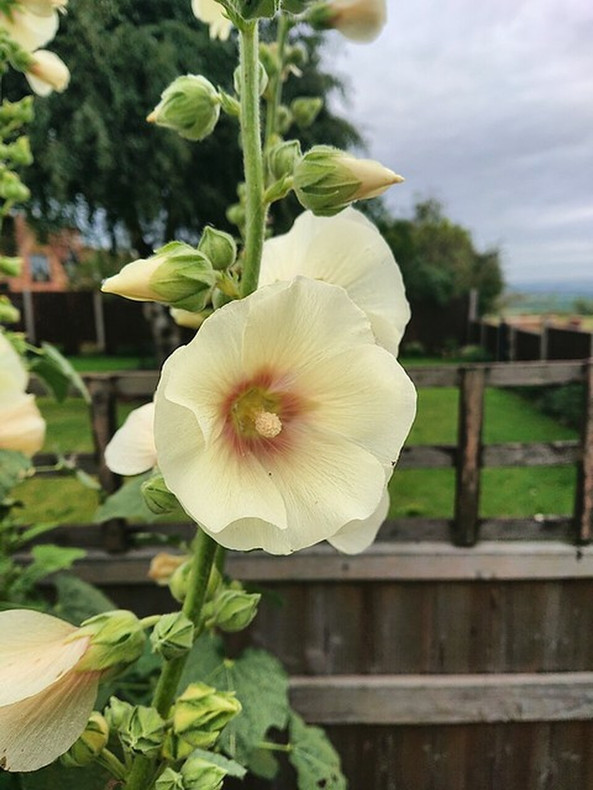Hollyhocks are the archetypal English (and wider UK!) cottage garden plant which has been loved for centuries. Gerard’s Herbal (1597) notes: “These Hollihockes are sowne in gardens, almost every where, and are in vaine sought elsewhere.”
Legend has it that at midsummer, an island would appear at the junction of the rivers Severn and Wye. It was a paradise filled with trees, flowers and songbirds and in the middle was a castle inhabited by faeries. Humans were allowed to visit the island via a tunnel beneath the river and, although faeries were never seen, invisible hands offered food and drink and lovely music filled the air.
There was only one rule to be observed by those who visited the faerie island - that nothing should be removed. One year, a small girl wanted to take home a bunch of flowers that she had picked on the island. Despite her mother forbidding her to do so, the girl hid one flower in her pocket and took it with her when she returned through the tunnel to go home. As soon as she left the tunnel she was turned into a hollyhock with the pink of her pinafore dress becoming its pink flowers. The faerie island disappeared, never to be seen again. It is said that faeries love hollyhocks, especially pink ones.
In addition to the Black Hollyhock, we sell White, Pink and Yellow varieties of Alcea ficifolia (The Fig Leafed Hollyhock), which are perennial, so last longer than the standard Hollyhock. They also have the very useful advantage of being rust resistant, unlike the more usual Alcea rosea.
If you are enjoying seeing Hollyhocks in gardens at this time of year, but don’t have any in yours, now is a perfect time to plant them for flowers from next summer. Hollyhocks will self-seed readily if allowed (remove the dead heads if you don’t want them to), which often leads to some wonderful displays after a few years.
View the range here.

